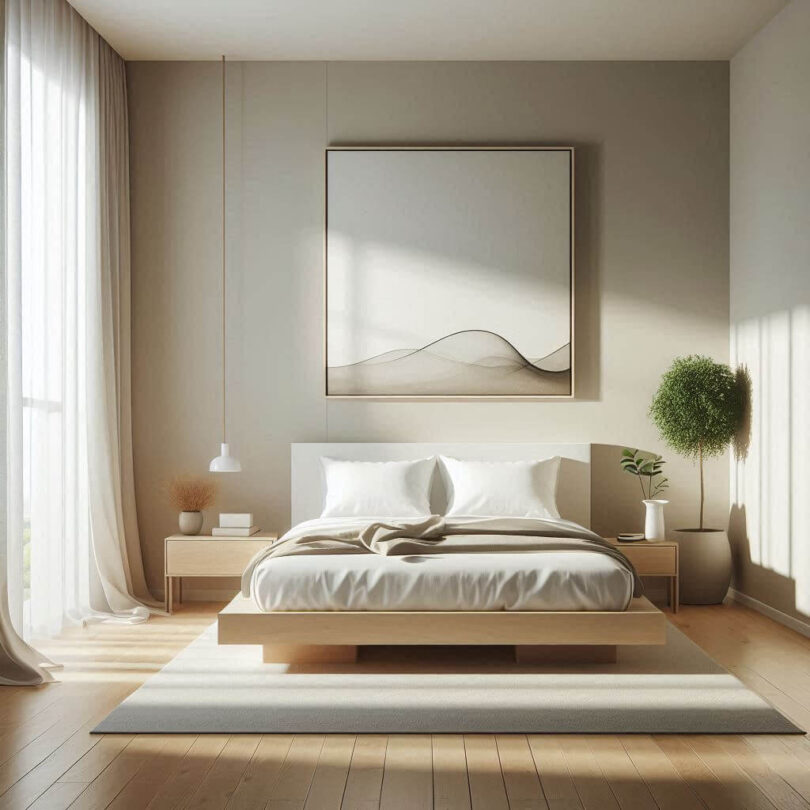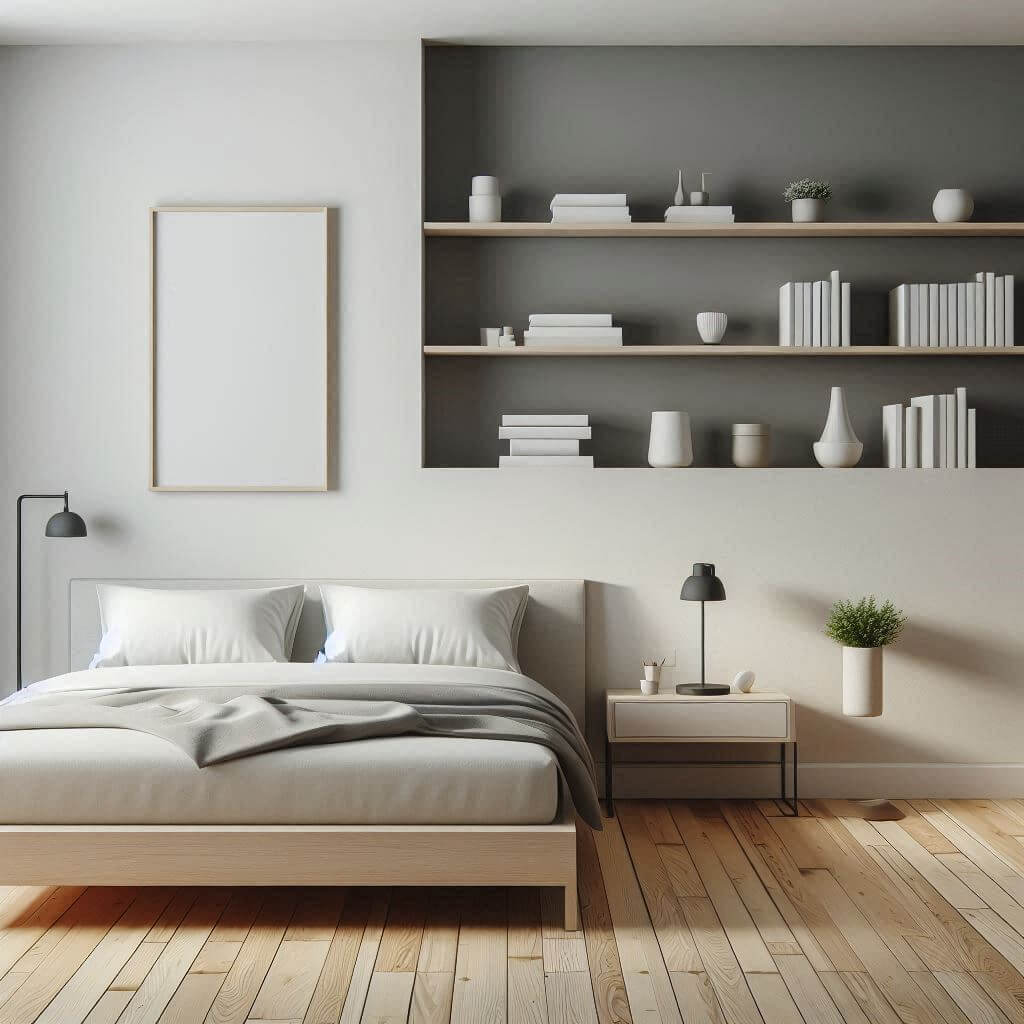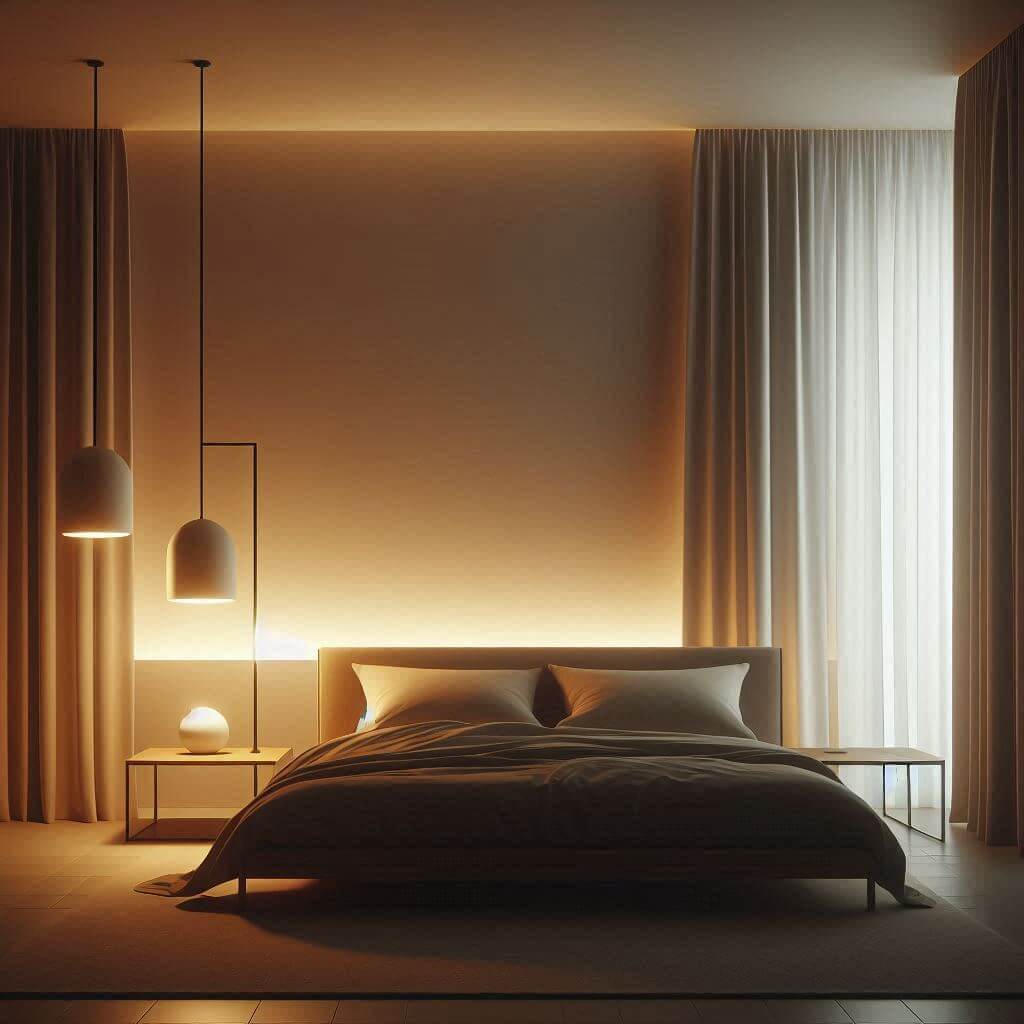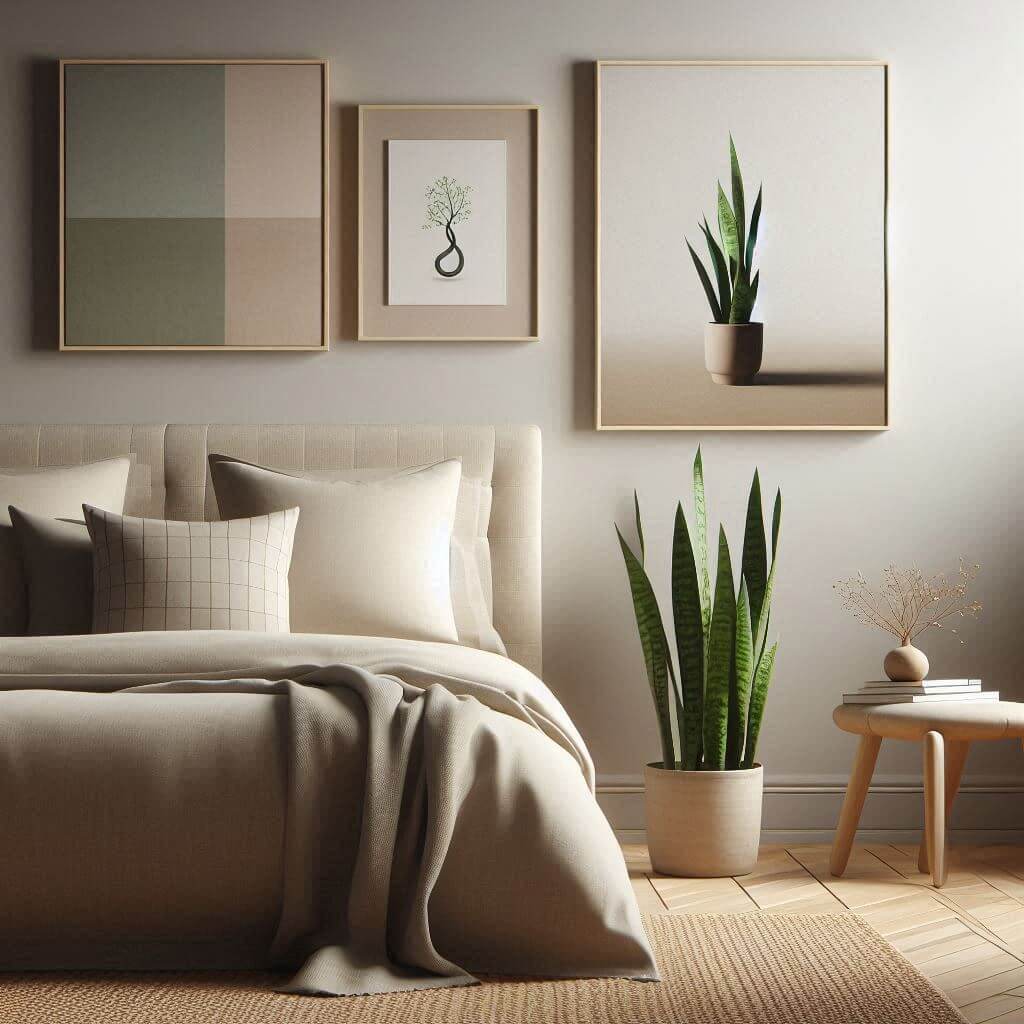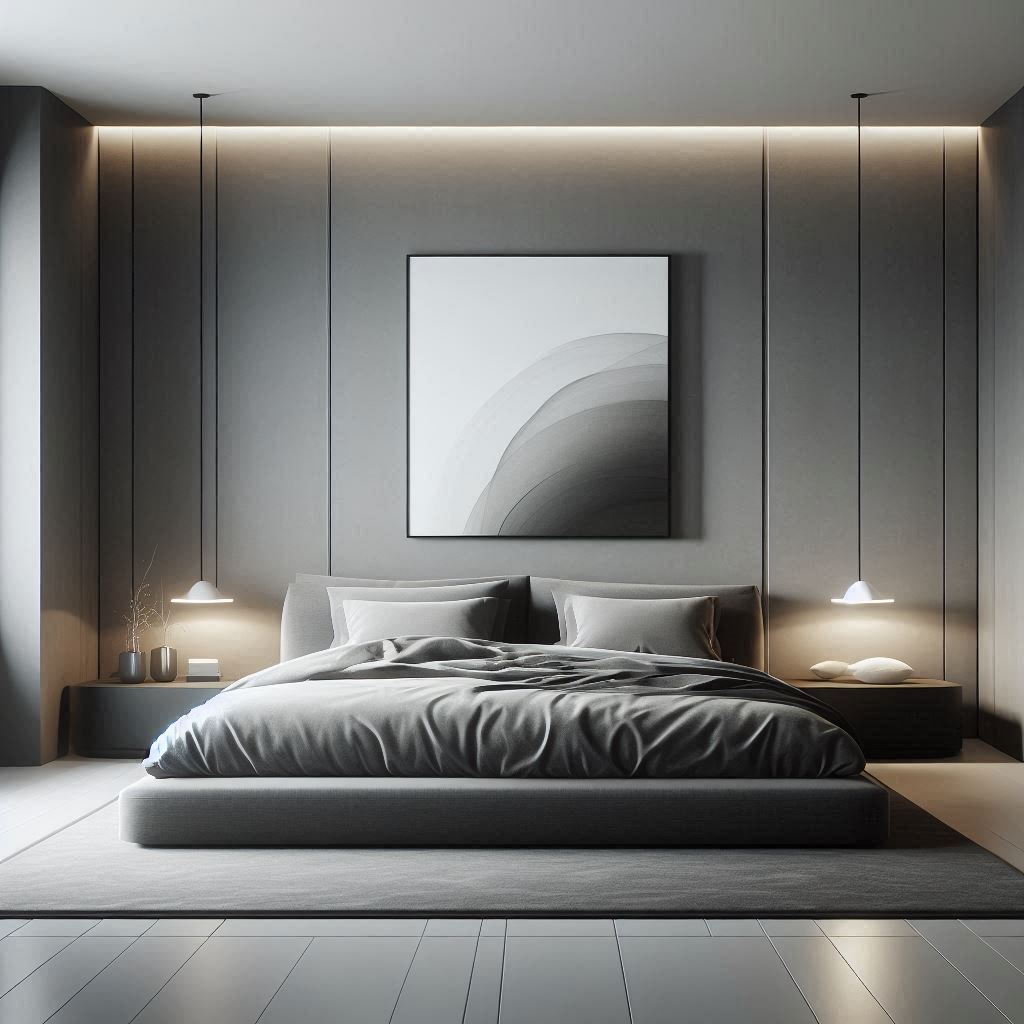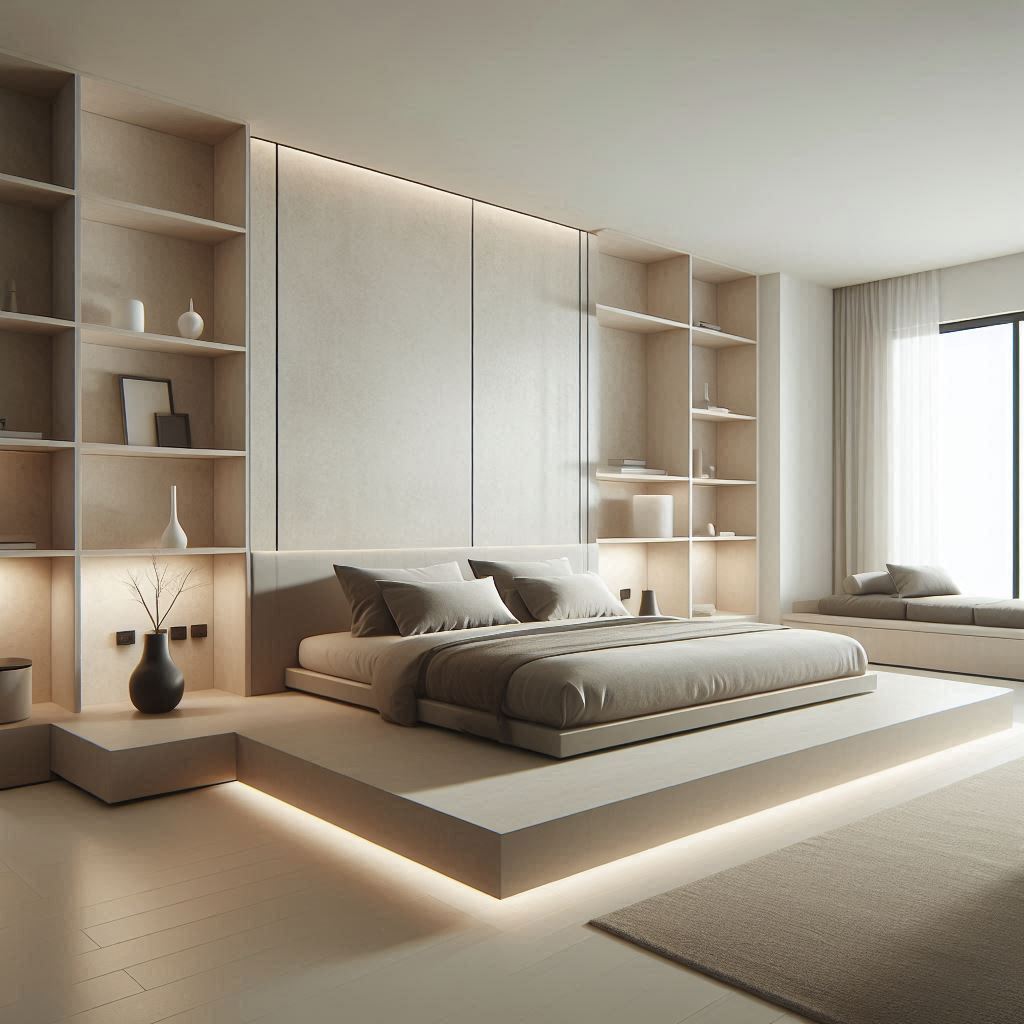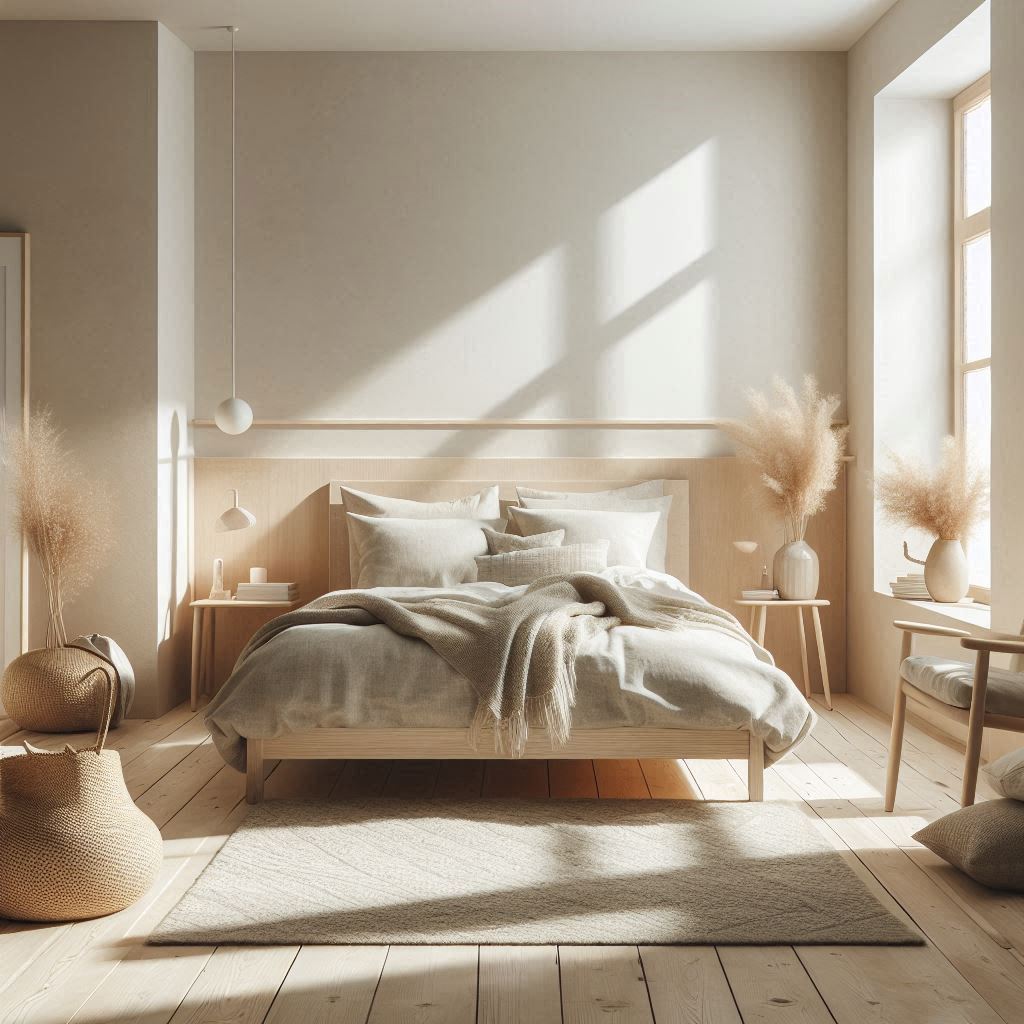Minimalism in bedroom design isn’t just about clearing clutter; it’s about creating an atmosphere of tranquility, simplicity, and functionality.
As someone who has experimented with different styles over the years, I’ve come to appreciate the elegance and serenity that a minimalist bedroom brings.
The beauty lies in the careful curation of what stays and what goes, with each piece having a purpose and a place.
In this article, I’ll share my personal insights, backed by trending design elements and practical tips that will help you create a minimalist bedroom that’s not only functional but also a calming retreat.
Understanding Minimalist Bedroom Design
Before diving into specifics, let’s define what minimalism in interior design is. It’s a design philosophy that emphasizes simplicity, functionality, and the elimination of excess.
A minimalist bedroom isn’t just about using fewer items; it’s about creating a space that is calm, uncluttered, and efficient.
The minimalist approach focuses on the essentials, highlighting clean lines, neutral color palettes, and quality over quantity.
Key Elements of Minimalist Bedroom Design
When creating a minimalist bedroom, certain elements come into play, each contributing to the overall aesthetic:
- Neutral Color Palette
A minimalist bedroom thrives on a neutral color palette. Shades of white, grey, beige, and muted tones set the tone for calm and relaxation. These colors help open up the space and make it feel less cluttered. I recommend using soft whites or light grays for walls, paired with natural wood finishes, which add warmth and a sense of balance. - Furniture with Clean Lines
Minimalism calls for furniture that has sleek, clean lines and simple shapes. The emphasis should be on quality materials rather than decorative excess. Opt for low-profile furniture pieces like a platform bed, streamlined nightstands, and simple dressers. Avoid heavy, bulky furniture that can overwhelm the space. - Quality over Quantity
The minimalist philosophy encourages investing in fewer, higher-quality items. Instead of crowding your room with multiple accessories or furniture pieces, focus on selecting a few that truly serve your needs and bring aesthetic value. A well-crafted wooden bed frame or a designer chair can be a statement piece that defines the room. - Natural Materials
Incorporating natural materials into your minimalist bedroom can enhance the sense of tranquility. Wood, linen, cotton, and stone are ideal choices for furniture, flooring, and textiles. These materials not only look aesthetically pleasing but also create a soothing atmosphere. - Decluttered Space
A minimalist bedroom has to be decluttered. Storage solutions like under-bed drawers, floating shelves, or built-in wardrobes can help store away items that aren’t in use. The goal is to create a clean and spacious area that feels light and airy. - Functional Lighting
Lighting plays a crucial role in setting the right mood. For a minimalist bedroom, opt for warm, soft lighting. Pendant lights or sconces with clean designs complement the minimalist vibe. Avoid excessive decorative lamps that can detract from the calm atmosphere you’re aiming for.
Step-by-Step Guide to Creating a Minimalist Bedroom
Now that we’ve covered the core principles, let’s dive into the process of turning your bedroom into a minimalist sanctuary.
Step 1: Start with the Bed
The bed is the focal point of any bedroom.
For a minimalist bedroom, choose a low-profile platform bed with a simple design.
A bed frame made from wood or metal in neutral tones works best. Opt for neutral-colored bedding like white or light grey to keep things fresh and calm.
Adding a few well-chosen pillows or a lightweight throw can add a layer of texture without overwhelming the space.
Recommended Product:
- Zinus Lorelei 12 Inch Platform Bed Frame – A sleek, modern platform bed with a minimalist design.
Check it out here.
Step 2: Choose the Right Furniture
Minimalist furniture should prioritize functionality and simplicity.
Avoid excessive ornamentation. A floating nightstand can free up floor space and maintain a clean look.
You can even consider wall-mounted shelves to hold books or a small plant without taking up floor space.
Recommended Product:
- Nathan James Harlow Nightstand – A stylish yet simple nightstand with a functional design that fits into any minimalist bedroom.
Check out here.
Step 3: Select Muted, Neutral Colors
The color scheme of your room should evoke a sense of calm.
Stick with shades like soft whites, light greys, beige, or pastels for your walls and large furniture pieces.
The flooring should preferably be in light wood or beige tones to continue the neutral theme.
Step 4: Declutter
Eliminate non-essential items and avoid overly decorative objects.
Go for practical storage solutions like hidden drawers or sleek built-ins.
Keep your surfaces clean and clear. The idea is to keep only the items that serve a purpose or contribute aesthetically.
Step 5: Use Simple, Functional Lighting
Go for pendant lighting or a simple, modern chandelier that fits the minimalist aesthetic.
Avoid chandeliers with excessive detail. Keep lighting fixtures streamlined and choose softer, warm bulbs for a cozy ambiance.
Recommended Product:
- Brightech Sky LED Torchiere Floor Lamp – A sleek, minimalist floor lamp that fits perfectly into any minimalist room.
Available here.
Step 6: Add Texture with Simple Accessories
Textures are crucial in a minimalist bedroom, but they should be subtle.
A woven throw, a couple of textured pillows, or a soft rug can introduce warmth and depth to the room without overwhelming it.
Stick with neutral tones and natural materials.
Step 7: Personalize with Art and Plants
While a minimalist design avoids clutter, personal touches like art pieces or plants can enhance the space.
Choose one or two art pieces that speak to you, preferably in muted colors, and add plants for a touch of nature.
Small succulents or a low-maintenance snake plant can liven up the room without taking up too much space.
Recommended Product:
- Costa Farms Snake Plant – An easy-to-care-for plant that works well in a minimalist bedroom.
Check it out here.
The Best Minimalist Bedroom Design Ideas
Based on my experiences and research, here are the top minimalist bedroom ideas that are trending in 2025:
- Monochromatic Color Scheme
Stick to variations of one color, like varying shades of grey, for a sleek and cohesive look.
2. Low Profile and Floating Furniture
Use furniture that sits low to the ground, such as platform beds, and floating shelves to create more visual space.
3. Scandinavian Minimalism
Incorporate functional yet beautiful pieces like light wood furniture, natural textures, and plenty of natural light for a Scandinavian-inspired minimalist room.
4. Neutral with Bold Accents
Use a neutral base with one bold color accent, such as navy blue, mustard, or terracotta, for subtle contrast.
5. Simplicity in Accessories
Choose one or two statement pieces of decor, such as an elegant pendant light or a large canvas, rather than cluttering the room with small items.
6. Zen-inspired Minimalism
Take inspiration from Japanese Zen design, incorporating natural elements like bamboo, stone, and simple, open spaces.
7. Industrial Minimalism
Combine minimalist elements with raw, industrial materials like steel or reclaimed wood for an urban minimalist vibe.
8. Soft, Natural Lighting
Replace harsh lights with soft, ambient lighting. Consider floor lamps or wall-mounted sconces with soft white bulbs.
9.Monochrome Bedding
Choose simple, monochrome bedding that complements the neutral tones of the room for a serene environment.
10.Neutral Tone Rugs
A light-colored rug adds comfort and warmth while maintaining the minimalist aesthetic. Opt for natural materials like wool or jute.
Final Thoughts
Minimalism isn’t about depriving your space of character; it’s about finding harmony in simplicity.
Each piece in a minimalist bedroom should serve a functional or aesthetic purpose.
By incorporating the right elements, from furniture to lighting, your bedroom can become a peaceful retreat that enhances both your sleep and your overall well-being.

